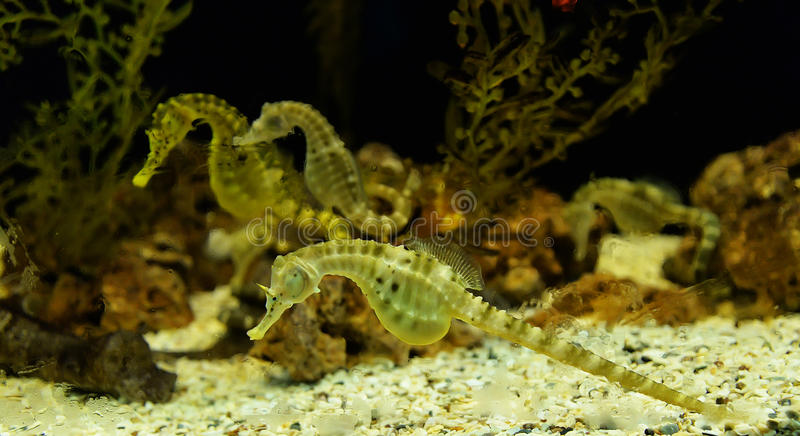ANIMAL: Potbelly/Bigbelly Seahorse Hippocampus abdominalis Type of Animal: Seahorse Habitat: Shallow algal areas, shallow seagrass areas, seaweed areas, shallow rocky reefs, attached to sponges, attached to colonial hydroids in deeper areas, attached to jetty piles, large rocks, coral reefs, drifting seaweed, sponge gardens, subtidal rocky reefs w/ seaweed/sponge gardens, rocky reefs w/ Ecklonia kelp cover, harbors, sheltered bays, large rock pools at low tide, kelp areas, low-flow sea beds, shark nets, areas near aquaculture fish cages, docks, estuaries, young/juveniles more pelagic, can be found as deep as 341.207 ft Location(s): SW Pacific around Australia & New Zealand Appearance: Forward-tilted long snouted head, distended narrow round potbelly, long coiled prehensile tail, very large seahorse, males have smooth soft pouch-like area at abdominal base where stomach meets tail on front side, females have more pointed stomachs w/ noticeable fin at base, coloration can be tan/yellow/black/brown/orange/white/gray/mottled/red/purple/tiger pattern/color mix, dark spots often seen on trunk/head, females more slender than males, males have longer tails/shorter snouts, males & females overall same size, more dorsal fin rays/tail rings than any other seahorse species, Food/Diet: Shrimp, amphipods, copepods, krill, zooplankton crustaceans, small fish fry Status in Wild: Stable Conservation: Breeding in aquariums & zoos. Protective measures in Australia. Extra protections from taking from wild. Lifestyle: Small herds of around 6 animals Additional Info: Called: Male: Seastallion Female: Seamare Young: Fry Group: Herd Weight: 6-8 oz Gestation: 1 month Life Span: 3-6 years Height: Adult: 8-13 in Young: 4 in Body Length: Adult: 8-13 in Young: 4 in Tail Length: Male: 3.25 in Female: 3 in Main predators are skates, cod, perch, tuna, wrasses, salmon, penguins, seabirds, crabs, & rays. While stable, threats do loom such as overfishing, water pollution, medicinal use, accidental bycatch, use as souvenirs, aquarium trade, & habitat loss. They’re very good at camouflage. They’re much better swimmers than other seahorse species, often traveling hundreds of yards a day. They swallow food in one piece w/ tube-like snout creating vacuum. Due to small gut tract, they don’t chew & can eat to excess. Reach maturity at 6 months old. Fun Fact(s): Like other seahorses, males get pregnant & develop brood pouch. Females insert egg-laying organ into male’s pouch, laying her eggs w/ male fertilizing them. Females deposit up to 1,500 eggs. A month later, male gives birth to 100-1,500 fry. Afterwards, fry are on their own. Males can have up to 4 broods a year. Males usually give birth at night. Eyes move separately. Prehensile tail allows them to coil around anything they can. When juveniles get older, they sink to bottom.
